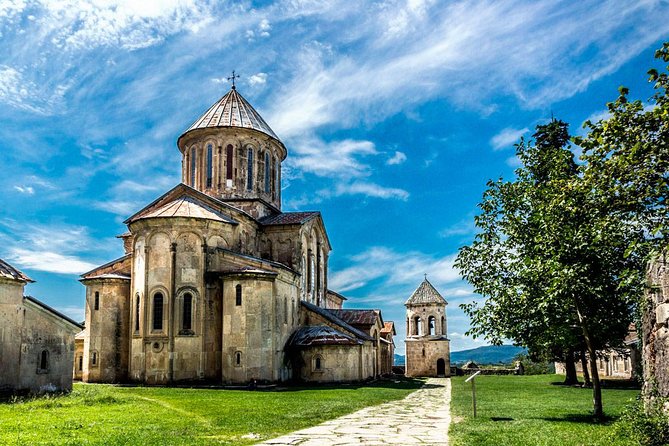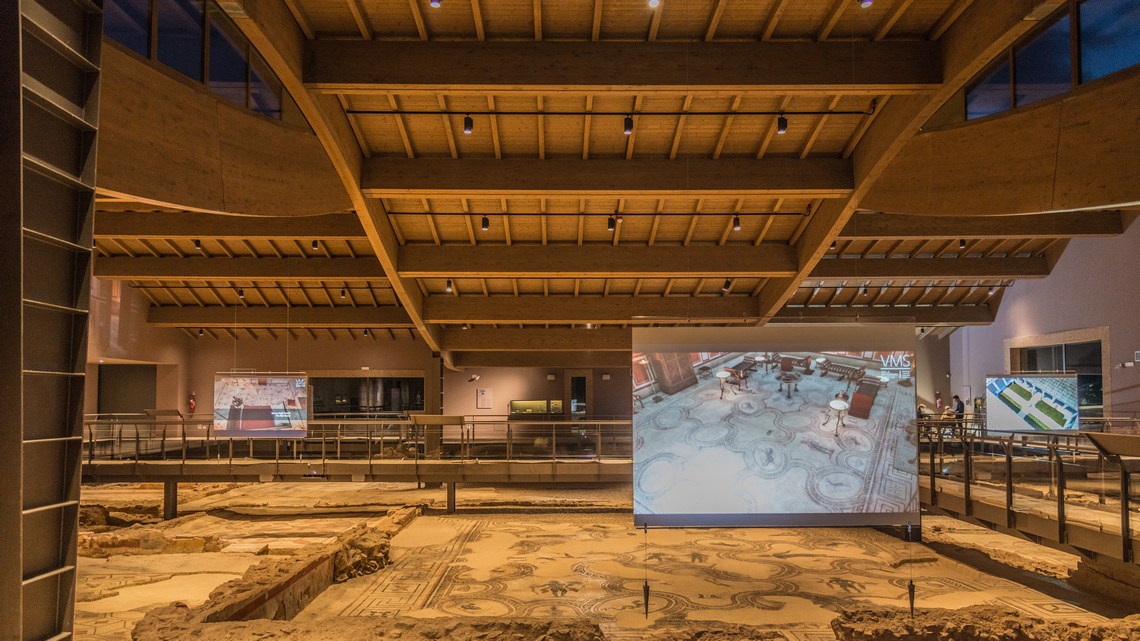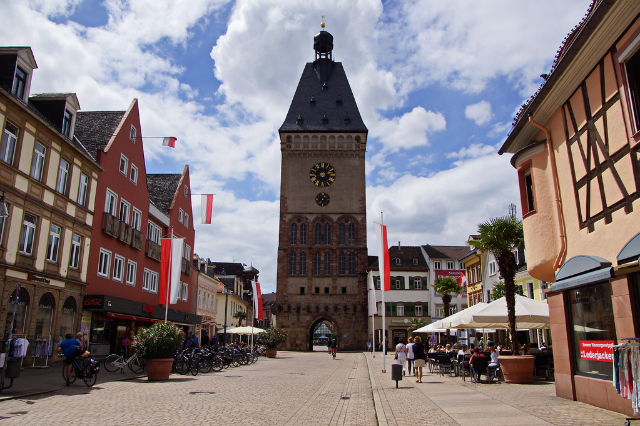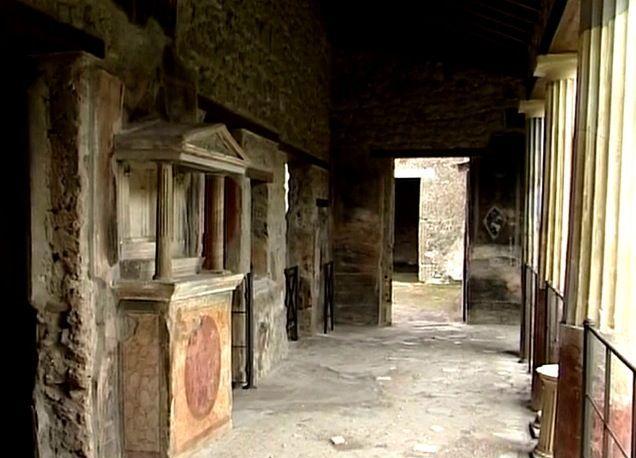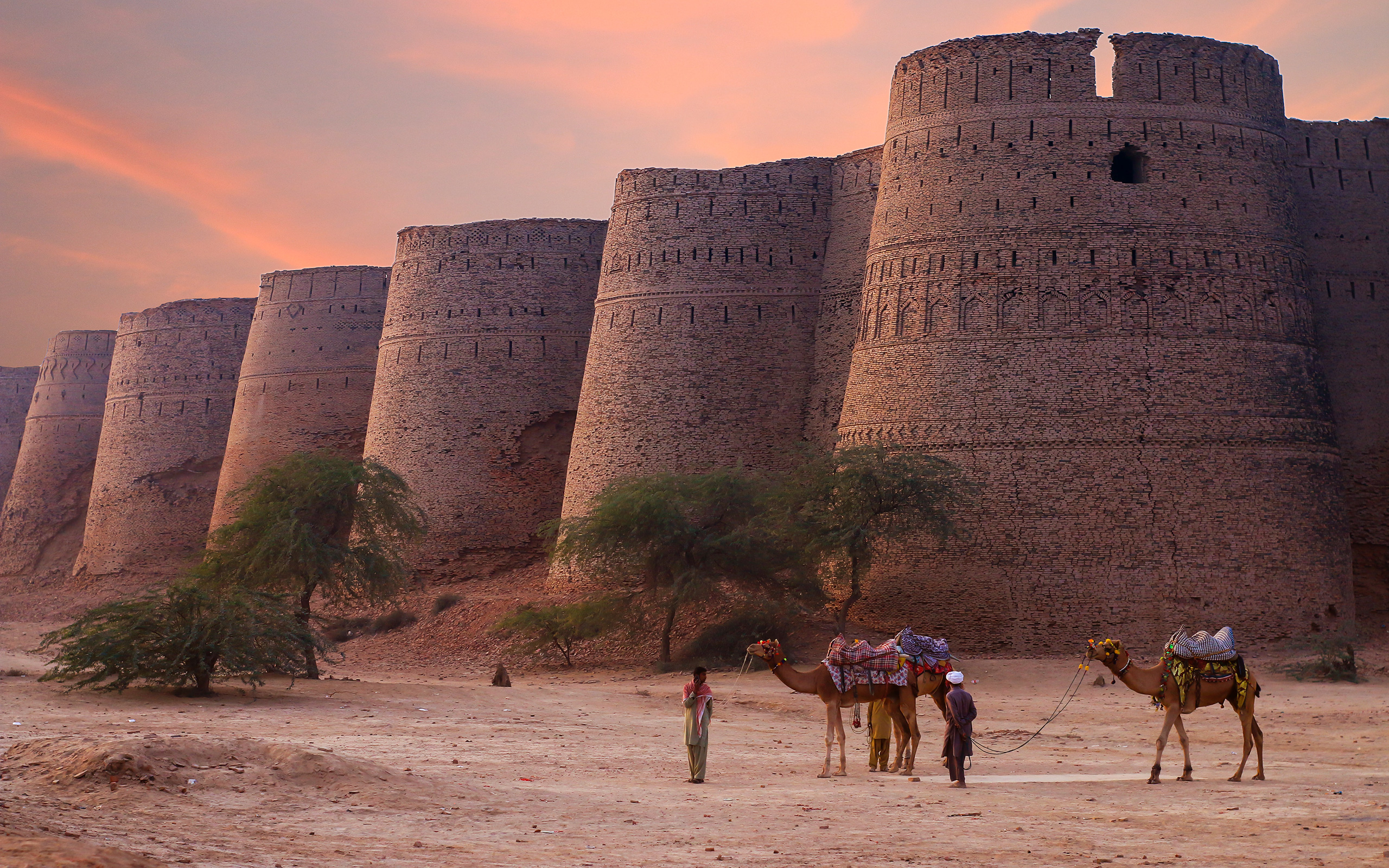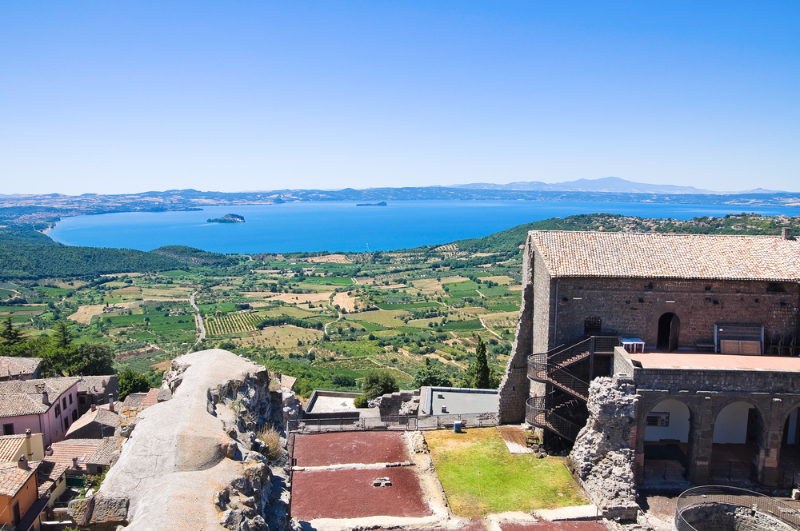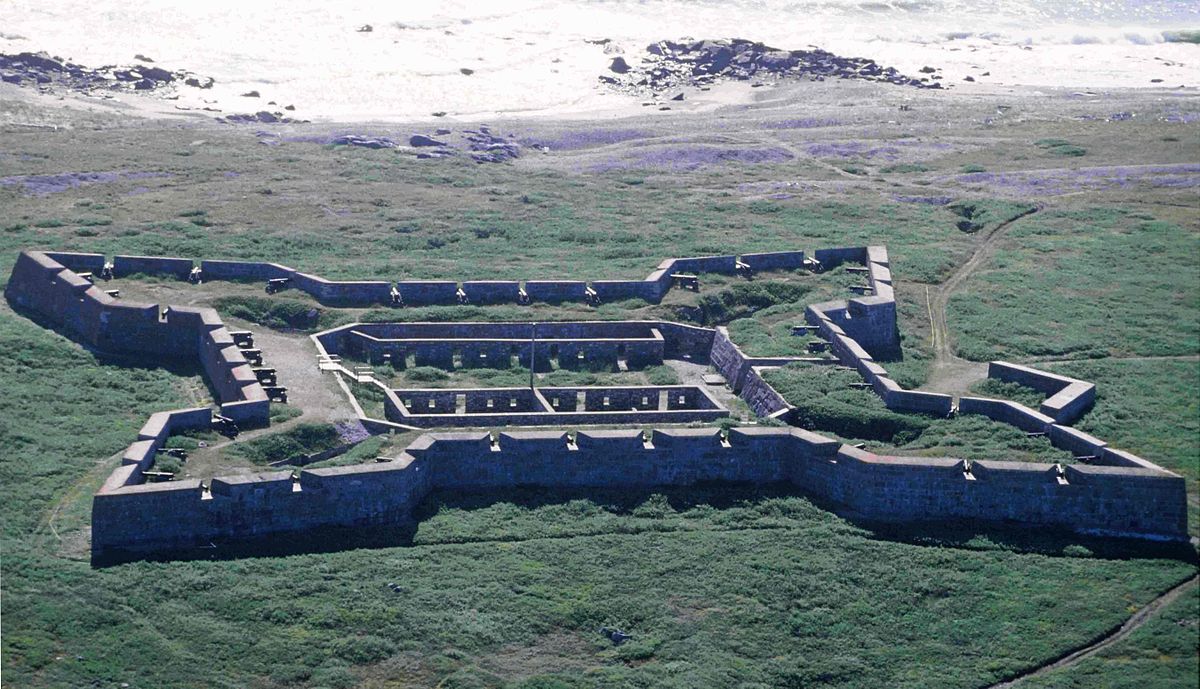On the lower southern slopes of the mountains of the Northern Caucasus, Gelati Monastery reflects the ‘golden age’ of medieval Georgia, a period of political strength and economic growth between the reigns of King David IV ‘the Builder’ (1089-1125) and Queen Tamar (1184-1213). It was David who, in 1106 began building the monastery near his capital Kutaisi on a wooded hill above the river Tskaltsitela. The main church was completed in 1130 in the reign of his son and successor Demetré. Further churches were added to the monastery throughout the 13th and early 14th centuries. The monastery is richly decorated with mural paintings from the 12th to 17th centuries, as well as a 12th century mosaic in the apse of the main church, depicting the Virgin with Child flanked by archangels. Its high architectural quality, outstanding decoration, size, and clear spatial quality combine to offer a vivid expression of the artistic idiom of the architecture of the Georgian “Golden Age” and its almost completely intact surroundings allow an understanding of the intended fusion between architecture and landscape.
Gelati was not simply a monastery: it was also a centre of science and education, and the Academy established there was one of the most important centres of culture in ancient Georgia. King David gathered eminent intellectuals to his Academy such as Johannes Petritzi, a Neo-Platonic philosopher best known for his translations of Proclus, and Arsen Ikaltoeli, a learned monk, whose translations of doctrinal and polemical works were compiled into his Dogmatikon, or book of teachings, influenced by Aristotelianism. Gelati also had a scriptorium were monastic scribes copied manuscripts (although its location is not known). Among several books created there, the best known is an amply illuminated 12th century gospel, housed in the National Centre of Manuscripts.
As a royal monastery, Gelati possessed extensive lands and was richly endowed with icons, including the well-known gold mounted Icon of the Virgin of Khakhuli (now housed in the Georgian National Museum) and at its peak, it reflected the power and high culture of Eastern Christianity.
Gelati Monastery is the masterpiece of the architecture of the “Golden Age” of Georgia and the best representative of its architectural style,characterized by the full facing of smoothly hewn large blocks, perfectly balanced proportions, and the exterior decoration of blind arches. The main church of the monastery is one of the most important examples of the cross-in-square architectural type that had a crucial role in the East Christian church architecture from the 7th century onwards. Gelati is one of the largest Medieval Orthodox monasteries, distinguished for its harmony with its natural setting and a well thought-out overall planning concept.The main church of the Gelati Monastery is the only Medieval monument in the larger historic region of Eastern Asia Minor and the Caucasus that still has well-preserved mosaics
